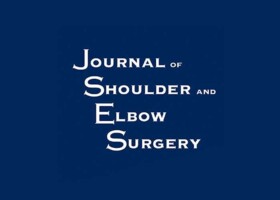
Authors:
Joshua A Greenspoon, Maximilian Petri, Ryan J Warth, Peter J Millett
Abstract:
The treatment of massive rotator cuff tears poses a challenge to orthopedic surgeons. The reported prevalence of massive rotator cuff tears has been as high as 40% of all rotator cuff tears. Studies have indicated a higher rate of recurrent tearing for massive rotator cuff tears after surgery compared with smaller tears. Adding to the complexity of the treatment of massive rotator cuff tears is the fact that structural failure does not always equate to clinical failure.
Many classification systems have been proposed to help guide the evaluation and treatment of massive rotator cuff tears. DeOrio and Cofield classified massive rotator cuff tears as tears that are >5 cm in size in either the anterior-posterior or medial-lateral dimension, whereas Gerber defined massive tears as those involving complete tears of at least 2 tendons. Davidson and Burkhart recently proposed a classification system linking rotator cuff tear patterns to treatment and prognosis. No consensus currently exists as to which classification system is best, and it is important to interpret the tear pattern information in light of the patient’s clinical situation.
Numerous surgical management options are available to treat massive rotator cuff tears, including nonoperative management, arthroscopic debridement with a biceps tenotomy or tenodesis, complete repair, partial repair, patch augmentation, superior capsular reconstruction, muscle- tendon transfer, and reverse total shoulder arthroplasty (rTSA). Figure 1 provides a summary of surgical treatment options for massive rotator cuff tears. To achieve the best outcomes for a patient, the orthopedic surgeon should have a good understanding of the indications for and clinical outcomes of the various treatment modalities.
For the complete study: Massive rotator cuff tears: pathomechanics, current treatment options, and clinical outcomes
